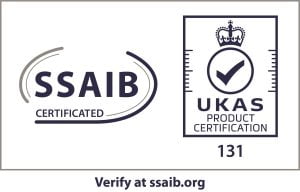Pan-tilt-zoom (PTZ) cameras are vital tools in video surveillance, offering flexibility that fixed cameras can’t match. Whether setting up security in a retail store, monitoring a large outdoor event, or creating dynamic live streams, PTZ cameras provide the control and capability to capture high-quality video from any angle. This guide will explore the features, benefits, and considerations of choosing and effectively using a PTZ camera.
What is a PTZ Camera?
A PTZ camera can pan (move horizontally), tilt (move vertically), and zoom (adjust its lens to focus closer or farther away). This versatility makes it ideal for situations where wide coverage is needed, and the camera needs to change views frequently.
Key Features of PTZ Cameras
Zoom Capability
The zoom feature on a PTZ camera can be optical or digital. Optical zoom changes the lens magnification, allowing the camera to maintain high image quality even at long distances. Digital zoom, meanwhile, enlarges the image digitally, which can sometimes reduce image quality.
High-Definition Video Quality
Modern PTZ cameras often support high-definition video recording. They can capture footage in resolutions such as 1080p or 4K. This ensures that the details in the video are clear and useful for security purposes or professional-quality live streaming.
Remote Control
One of the biggest advantages of PTZ cameras is their ability to be controlled remotely. This can be done via software on a computer, a dedicated controller, or even a smartphone app, allowing users to adjust the camera’s view as needed from any location.
Choosing the Right PTZ Camera
Assessing Your Needs
Before purchasing a PTZ camera, consider what you need it for. The range of motion, zoom length, and the level of detail required will influence which model is best for your application. Also, consider the environment in which the camera will be used, as outdoor models need to be weather-resistant.
Compatibility and Connectivity
Ensure your PTZ camera is compatible with your existing surveillance system or broadcasting setup. Check for connectivity options like HDMI and Wi-Fi and whether it supports streaming protocols if you intend to use it for broadcasting.
Installation Tips for PTZ Cameras
Placement
Choosing the right location is crucial for maximizing the effectiveness of your PTZ camera. It should be placed high enough to cover a wide area but still within reach for maintenance. Avoid places with direct sunlight or potential obstructions.
Power and Connectivity
If the camera is to be networked, ensure that your installation site has access to power and a reliable internet connection. Use Power over Ethernet (PoE) to streamline installation and reduce cable clutter.
Best Practices for Using PTZ Cameras
Regular Maintenance
Like any electronic device, PTZ cameras require regular maintenance. This includes cleaning the lenses, checking the motors and cables, and updating the camera’s firmware to ensure optimal performance and security.
Utilising Presets
Many PTZ cameras allow you to set presets for different viewing angles and zoom levels. These presets allow you to quickly switch between key areas of coverage, which is particularly useful in scenarios where you need to monitor multiple locations at once.
Top PTZ Camera Recommendations
Several models stand out for those ready to invest in a PTZ camera due to their reliability, feature set, and user feedback. The Panasonic AW-UE70, for example, offers 4K resolution and excellent remote control, making it a favourite for security and live event coverage.
Conclusion
PTZ cameras are robust tools for anyone needing versatile, high-quality video surveillance or broadcasting. Understanding your needs, choosing the right model, and following the best installation and usage practices can significantly enhance your security system or broadcast setup.

